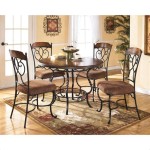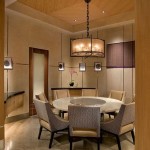What Size Area Rug For A Dining Room?
An area rug can transform a dining room, adding warmth, color, and a defining element to the space. Choosing the right size is crucial for the rug to complement the room's design and functionality. An overly small rug can make the room feel cramped, while an oversized one can overwhelm the space. An appropriately sized dining room rug should create a balanced and cohesive aesthetic, enhancing the overall visual appeal of the area.
Key Factors to Consider
Several factors contribute to determining the ideal size for your dining room rug. These include the size of the room itself, the size of the dining table and chairs, the layout of the room and the desired aesthetic.
1. The Size of the Room
The size of your dining room plays a significant role in rug selection. A large dining room can accommodate a larger area rug, while a smaller room might benefit from a more compact option. Generally, the rug should leave at least 18 inches of space between the edge of the rug and the walls to create a balanced appearance.
2. The Size of the Dining Table and Chairs
The dining table and chairs are central to the dining room, and the rug should be sized accordingly. Ideally, all four legs of the chairs should sit comfortably on the rug, even when pulled out for dining. If the rug is too small, the chairs will scrape against the floor, creating noise and potential wear and tear.
3. Room Layout
The layout of the dining room also influences rug selection. In rooms with a formal arrangement, a large rug that extends beyond the table, covering most of the floor space, might be suitable. However, in rooms with a more casual or minimalist layout, a smaller rug that sits exclusively under the table may be preferable.
Dining Room Rug Size Guidelines
To ensure a harmonious balance between the rug and the dining room, consider the following guidelines:
1. Small Dining Rooms
In small dining rooms, a rug that extends 18 to 24 inches beyond the table on all sides is a good starting point. This size creates a visual connection between the rug and the room while leaving enough space for comfortable chair movement. However, if the room is particularly small, consider a rug that covers the space beneath the table and extends a few inches beyond its edge. This will ground the table and chairs while creating a cohesive and visually appealing design.
2. Medium-Sized Dining Rooms
For medium-sized dining rooms, aim for a rug that extends 2-3 feet beyond the table on all sides. This creates a more spacious feel and allows for a larger visual connection between the rug and the room. The added space also makes it easier to move chairs around without bumping into the rug's edges.
3. Large Dining Rooms
In large dining rooms, you have more flexibility when choosing rug size. Consider a rug that extends 3-4 feet beyond the table on all sides, creating a grand and opulent effect. Alternatively, you can opt for a rug that covers an entire area within the room, like a dedicated dining area, for a more defined and cohesive design. This approach allows for a more dramatic and visually striking effect, showcasing the rug as a focal point within the space.
Beyond the Basics: Additional Considerations
While the guidelines above offer a starting point, there are several other factors to consider:
1. Rug Shape
Rectangular rugs are the most common choice for dining rooms, but other shapes such as round or oval can also be used effectively. A round rug can create a relaxed and informal ambience, while an oval rug can add a touch of elegance and sophistication. However, it's essential to remember that the shape of the rug should complement the shape of the dining table and the overall style of the room.
2. Rug Pattern and Color
The pattern and color of the rug can have a significant impact on the overall look and feel of the dining room. A patterned rug can add visual interest and break up a neutral color scheme, while a solid rug provides a clean and minimalist backdrop. The choice of colors should complement the furniture, walls, and other decor within the space.
3. Rug Material
The material of the rug also affects its durability, comfort, and aesthetics. Natural fibers such as wool and cotton offer warmth, durability, and a classic aesthetic. Synthetic fibers such as nylon and polyester are more affordable and easier to maintain. The choice of material should be based on your specific needs and preferences.
By following these guidelines and considering your individual preferences, you can choose an area rug that complements your dining room and enhances its overall beauty and functionality.

Choosing The Perfect Dining Room Rug Size

Dining Room Rug Size Dinning Under Table

What Size Rug Do I Need End Of The Roll Flooring Centres

Designers Guide Fitting An Area Rug To Any Space

Your Guide To Outdoor Rug Sizes Authenteak

Sparkling Typical Rug Sizes Graphics Luxury Or Dining Room Rugs Size Ru Area Guide

What Size Rug Under Dining Table Here S The Best Way To Find Righ

Rug Sizes Size Guide Nw Rugs Furniture

How To Size A Rug For Your Dining Room Rugs Direct

Guide To Rug Sizing For Living Room Or Dining








